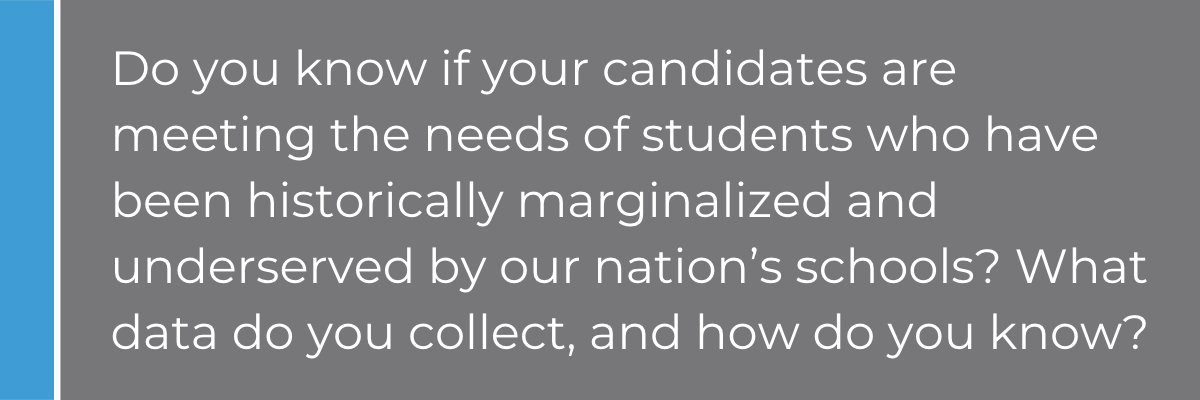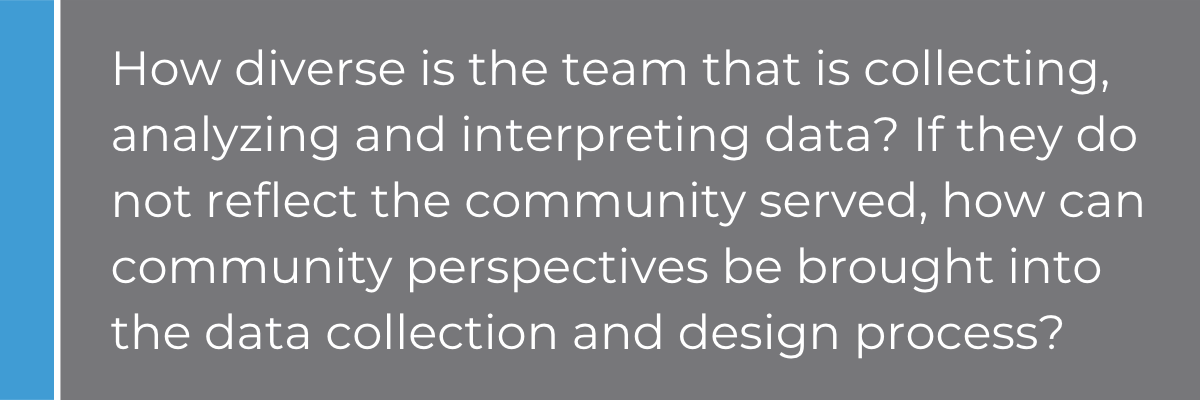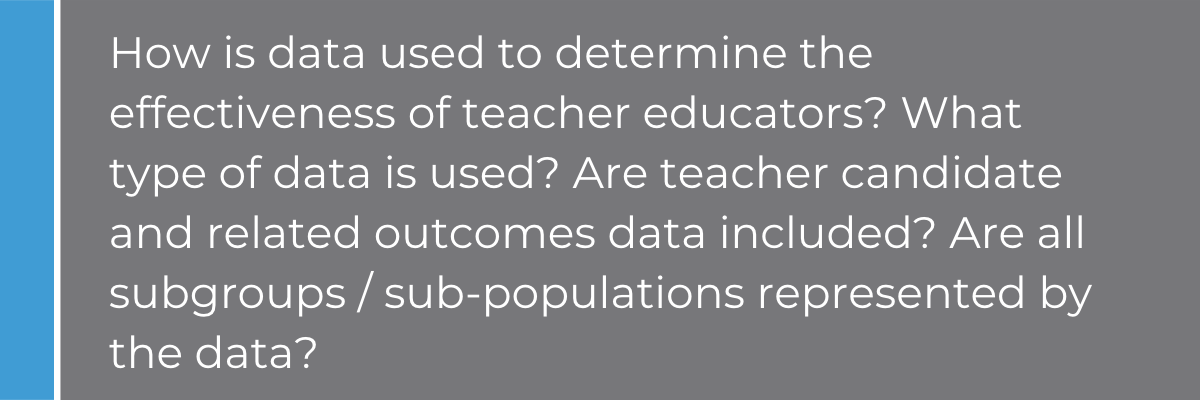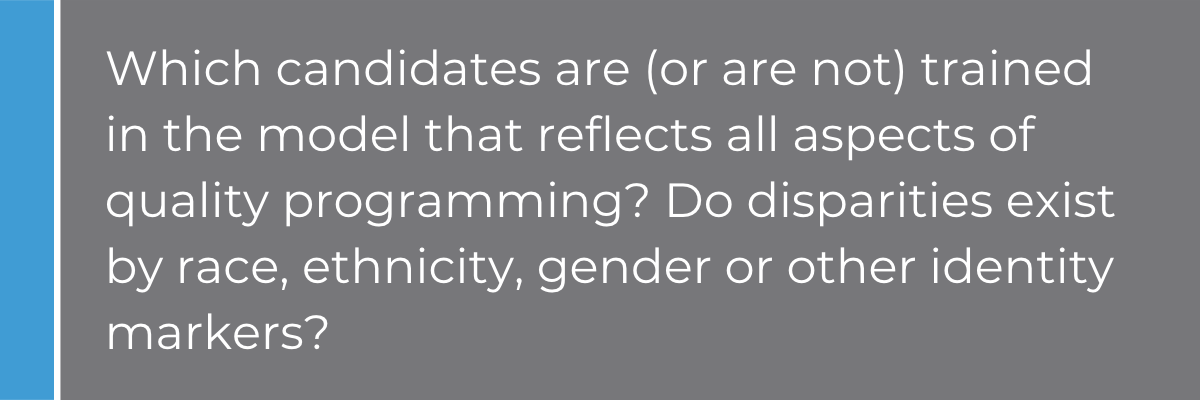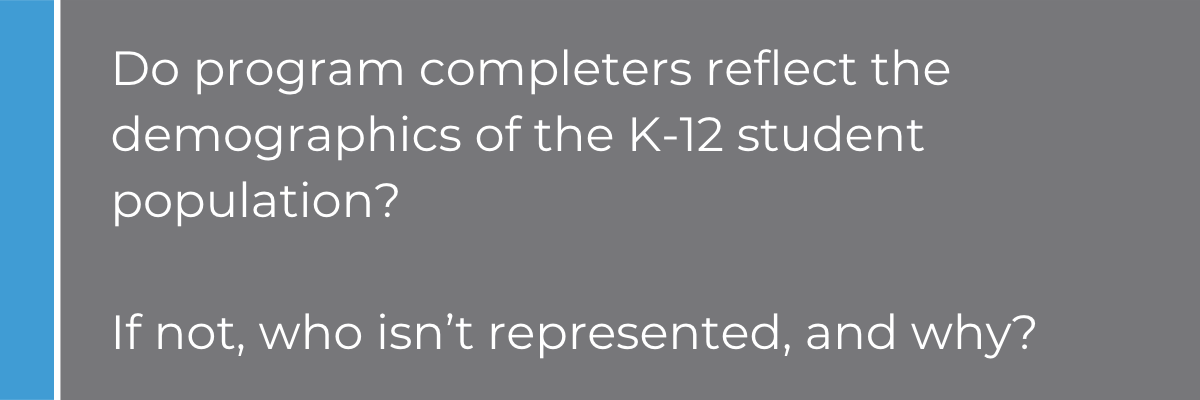This data toolkit is intended to assist educator preparation programs (EPPs) with diagnosing the status of their data use practices as well as providing valuable resources in the development of program protocols.
You will find explanations and resources aligned to what US PREP has developed as the "Data Cycle.” This Cycle includes the planning, collecting, moving, analyzing, visualizing, using, and then closing “the loop” on data to inform and promote action.
To measure your current data use practices and provide you with a place to start, you can find the
Data Use Diagnostic tool linked below. To view this toolkit in PDF form, click
here.
Disrupting Inequities with Data
Disrupting systemic inequity is central to the work of the US PREP coalition members and data plays a critical role in ensuring we are able to make better, more informed, decisions in the preparation of teachers.
There is a wealth of scholarship that illuminates the ways that data has been used to reproduce inequalities in schooling and access to learning opportunities (e.g. IQ tests have been misused to form conclusions about children’s intelligence and track them into and out of opportunities to engage content in ambitious ways). As such, we support critical data use, where users, programs, and educators interrogate what data represents, and who or what sorts of knowledge it might include or exclude. We must be intentional about how we use data so we don’t reproduce systems of inequality.
Throughout the data cycle there are many opportunities to promote the disruption of inequities in PK-12 classrooms, schools, and communities across the nation via high-quality educator preparation. There are an unlimited number of questions you might ask when investigating the intersections of equity and data use. Some example questions are below.
These questions and many more can be found in this DEI Companion Document that has been developed by the Teacher Preparation Transformation Center’s Community of Practice. This document was developed to guide Centers and teacher preparation programs who are seeking to engage more deeply in diversity, equity, inclusion and antiracism.
We have included a section within each part of this toolkit that spotlights how that component can contribute to enhancing the focus on promoting data equity within your program. Look for this symbol to explore additional resources and insight on how to keep diversity, equity and inclusion foregrounded throughout your EPP.
Effective data use practice begins with and is rooted in two primary areas of focus that drive all subsequent actions: data quality and data governance. These actions support data use practices that have integrity and value. Cohering around these key components allows for data to be discussed and used in ways that meet multiple goals. For example, when data quality and governance exist, trust can be developed across stakeholders as data from multiple sources is collected, analyzed, and used to guide decisions that promote engagement from program leadership, faculty, students, district partners, and other key stakeholders. Additionally, quality and governance can support equity goals by providing both space and a method to explore multiple perspectives and experiences, leveraging strengths to overcome challenges.
Data Quality
Data Quality includes many aspects, but the two that are most critical are validity and reliability. Both are important aspects of data, yet have very different purposes. Validity is the degree to which data represents what it is intended to represent, while reliability refers to how trustworthy the data is over time. Far too often, data used to measure quality, learning, and growth that lacks one of these aspects. Consider these critical elements to ensure data quality:
- Align each question, definition, and metric to the intended goal.
- Strive to utilize methods that generate and report metrics consistently over time.
- Revise methodologies or definitions annually to reduce the likelihood of long-term problems.
- Implement collection protocols that control for variables, such as incomplete data sets, to avoid misdiagnosing program quality.
What is most important is that
valid and
reliable data is collected, analyzed, and used for decision making, with a keen eye on how it is used and what it might actually measure.
Data Governance
Data governance is the formal oversight process related to defining data sources, determining processes for collecting, analyzing, and using data, and making shared decisions. It addresses both the fidelity and integrity of the data and data collection protocols. By carefully and collaboratively reviewing governance structures, findings will remain clean and accurate.
Data governance is most effective when it is a shared responsibility with various levels of educator preparation program, district, and campus-based stakeholders represented, each of which have applicable and relevant knowledge about the data, how it’s collected, and the decisions it can best inform.
This formal process will also support data integrity and equity by ensuring processes remain sound and benefit all stakeholders.
Decision making based on data that is not normed and inclusive of all stakeholders (e.g. redesigning coursework based on the observational data using an observation tool that has not been normed and calibrated or only surveying one set of stakeholders and generalizing those findings across multiple stakeholders) can create and perpetuate inequality.
Why Data Use Is Important To Educator Preparation Programs
Source: Ellen B. Mandinach, 2016 CAEP Pre-Conference Session, “Using Data for Programmatic Continuous: Improvement and the Preparation of Data Literacy for Educators"
Now it's time to measure your current data use practices. Click below to take the
Data Use Diagnostic. From there, you can explore the individual Data Cycle steps and further assess your progress.


